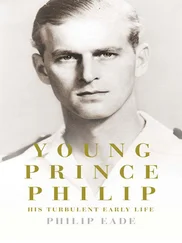However, one school of thought considers the oprichnina itself to have been modelled on a monastic order, with a rule laid down by the Tsar himself. Funded initially by a huge allocation of 100,000 rubles from state funds, it eventually came to absorb the revenues of a large part of his realm. Its assets enjoyed the same protection as did the Church’s property, and were subject to no taxes. All other property continued to be administered by the normal agencies and was taxed to provide income for the state, but Ivan’s ‘separate realm’ was his own, untrammelled by any institution, including his own bureaucracy The foundation of the oprichnina proved to be the first of several attempts by Russia’s rulers to bypass normal channels and find a more direct, efficient instrument of asserting their will. From this perspective the black-cowled oprichniki were merely the first of the state’s special agents.
The oprichniki themselves included many leading members of the old elite, and they were organized as a quasi-monastic community. The Tsar was its abbot; its headquarters was the surburb of Alexandrova, to which Ivan had moved in 1564 shortly before founding the order, and its rule derived in part from that of the Basilian Order and was influenced, apparently, by the Dominicans (whose coat of arms also features a dog). Curiously enough, the unicorn adopted for the oprichnina’s coat of arms was also the symbol of the Jesuits. 30Ivan was nothing if not eclectic.
The ruthless depredations of the oprichniki are proverbial. In effect they represented government by terror; and all the while the ruinous war for Livonia continued. Ivan invoked the people in support of his purpose, and in 1566 the first representative ‘Assembly of the Land’ (Zemskii Sobor) endorsed the continuance of his policy The only opposition came from the Church. That same year Metropolitan Afanasii resigned after an incumbency of only two years. His successor was sacked after only two days, and his successor, Filipp, was deposed two years later by a synod at the Tsar’s insistence (and was murdered within months by a leading oprichnik). Filipp’s successor, Pimen, was himself to be deposed in 1570. The times were fraught, the struggle desperate.
By the Union of Lublin of 1569, Lithuania formally merged with Catholic Poland. Lithuanian noblemen were now eligible for the same legal and political privileges as their Polish counterparts, provided they were, or became, practising Catholics. From that point on the Orthodox elite of Lithuania began to desert to Catholicism in increasing numbers. The same year King Erik XIV of Sweden was deposed in a coup, altering the political balance in the Baltic region, and the citadel of Izborsk fell. The fact that Izborsk was well defended, and the force that captured it small, suggested treason. Rumour reached the Tsar that Archbishop Pimen of Novgorod was preparing to hand Novgorod and Pskov to the Polish king, and that all sectors of the Novgorod population were involved in the plot. If true, it would not have been surprising. Novgorod had been squeezed very hard for taxes in recent years; Muscovite officials had replaced local men, and so many peasants had fled that there was a labour shortage too.
Once again, then, a tsar’s fears of holding the line in the west centred on Novgorod, and so in 1570 the oprichniki descended on the city, sacked it, and butchered as many as 30,000 of its inhabitants. A huge number of hereditary estates were taken over, the surviving owners being banished to other parts of Russia and the land which was once theirs redistributed to state servitors. 31Two years later, however, in the autumn of 1572, the Tsar abolished the oprichnina. It may have served its original purpose, but as a seven-year experiment in government by tension it had been an expensive disappointment. An experiment bred of desperate impatience, designed to strengthen the state, turned out to have wasted its resources and dissipated its strength. Its assets were returned whence they had come. The revolution, if revolution it was, was over.
The Livonian war was now directed against Sweden as well as the Knights, while the Crimean Tatars remained a perennial menace in the south. Indeed, on one occasion they were more than a threat. In 1571 their army had looted Moscow and burned it, though it had failed to take the Kremlin. The strains on Ivan and Russia were severe. Yet there were successes too. In the summer of 1572 another onslaught by the Crimean Tatars was broken at Molodi; in 1573 the Swedish fort of Pajda in Livonia was captured, and a faction of Poland’s nobility even canvassed the name of Ivan’s son, Fedor, as a candidate to Poland’s throne. But not until 1577 could the necessary resources be gathered for yet another major offensive in Livonia. By September of the same year the region was all in Ivan’s possession except for the port cities of Riga and Tallin which he desired so much.
Then the tide turned. In 1578 Russian forces were defeated at Wenden, and other Livonian towns were lost. A new king of Poland, the able Hungarian strategist Stefan Bathory, was sweeping all before him. Then Ivan’s former ally King Magnus of Denmark deserted the cause and in 1579 the city of Polotsk was lost. Ivan had been driven back almost to the point where he had started. Within months he was suing for peace, prepared to surrender everything that he had gained at so much cost in the north-west.
To what extent internal strife had contributed to the reversal of fortune it is difficult to say. Ivan’s purges were over. There had been nine terrible bouts of executions. Indeed, they had become an almost routine mark of that period of Ivan’s reign. He expressed indignation at the massacres in France to his ally the Emperor Maximilian II, but he himself was no gentler than the King of France. Some of his most successful generals were among his victims. So was the keeper of his Great Seal, the brilliant diplomat Ivan Mikhailovich Viskovatii. Nevertheless Viskovatii bequeathed a legacy that was to be of lasting value to the Russian state.
The work of establishing protocol for dealings with foreign countries, already begun, had been extended under Viskovatii’s supervision, at a time when the European diplomatic system was still in process of formation. And he had also established a practice for keeping records in a systematic way 32Every embassy, of whatever rank, sent to another country (as yet no state maintained permanent missions in other capitals) was equipped with detailed instructions about what to say and even in what circumstances to say it. It was also given specific questions to ask, and lists of matters it should seek intelligence about. As a result, a large database was built up on all previous dealings with a country and of accurate intelligence about its geography, resources, society and mores. Russian diplomats may have taken protocol and recordkeeping to tedious lengths, but the tradition carried with it some inestimable advantages. Russian decision-takers tended to be better informed than their rivals, and, though their representatives abroad often seemed slow and their method cumbersome by contrast to their often more brilliant opposite numbers, they were more careful, painstaking, professional.
This was a less glorious achievement than the capture of Kazan and Siberia, perhaps, but none the less significant. Advantage was also gained from Ivan’s massacres, for they had helped to complete the revolution in landholding begun by the Tsar’s predecessors. Henceforth the entire elite of Russia served the tsar, and knew that their privileges and their advancement depended on him alone. Although his reign coincided with a demographic upswing, it also saw a major haemorrhage of the kind of talent and expertise which is of value in building empires, and the massacres left a blot on his reputation. They stirred deep resentments at the time. Yet they may also have added to the Tsar’s popularity as the supporter of the common man (a reputation which the Tsar’s own court may have helped to create by spreading positive rumours about him). History’s verdict on Ivan has not yet been agreed.
Читать дальше





![Stephan Orth - Behind Putin's Curtain - Friendships and Misadventures Inside Russia [aka Couchsurfing in Russia]](/books/415210/stephan-orth-behind-putin-s-curtain-friendships-a-thumb.webp)





